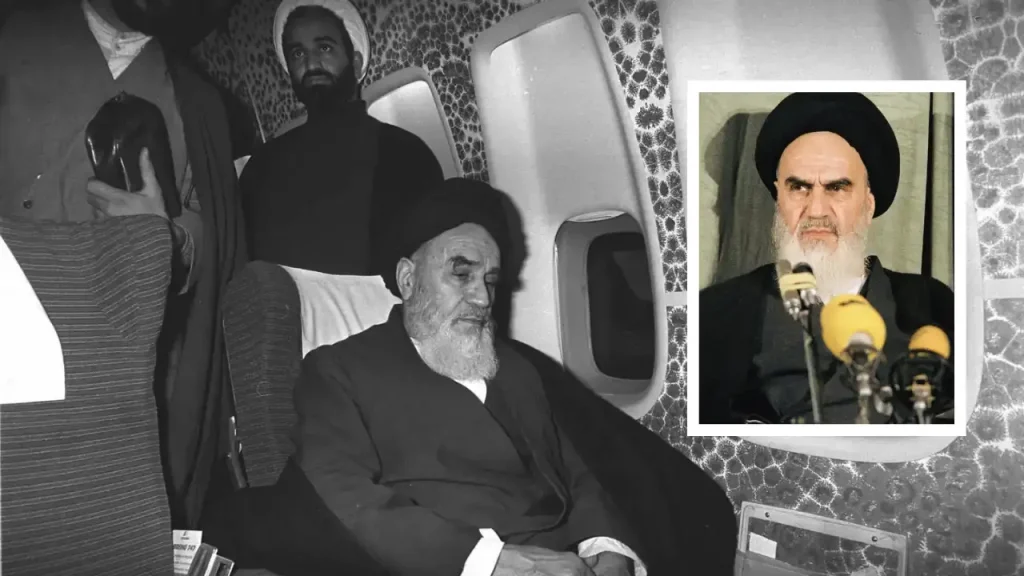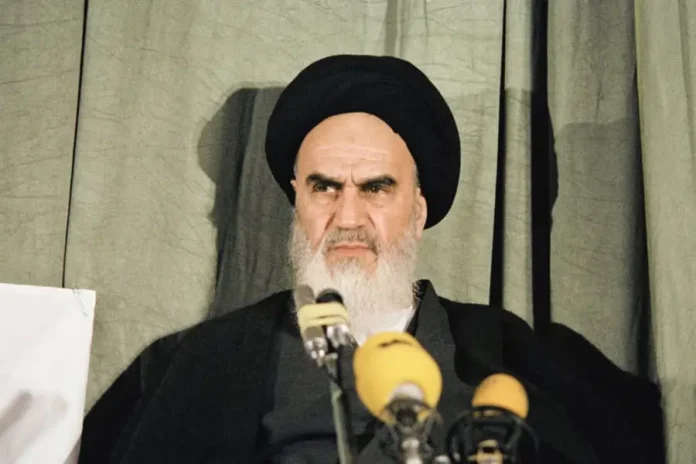Ayatollah Ruhollah Khomeini was not just a religious scholar—he was a revolutionary icon who reshaped Iran’s identity. As the founding Supreme Leader of the Islamic Republic of Iran,
Khomeini led the historic 1979 Islamic Revolution, toppling the monarchy and establishing a theocratic regime rooted in Shia Islam.
His speeches, writings, and unwavering stance against Western influence made him a global figure—revered by some, feared by others.
In a striking intersection of history and geopolitics, modern Iran’s founding Supreme Leader, Ayatollah Ruhollah Musavi Khomeini, can trace his lineage back to Barabanki, Uttar Pradesh, India.
This deep-rooted connection reveals how the migratory paths of Shia clerics centuries ago profoundly shaped Iran’s ideological and theocratic structure.
The Journey Begins: Ahmad Musavi Hindi’s Migration
In the early 1800s, Syed Ahmad Musavi Hindi, born around 1800 in Kintoor near Barabanki, hailed from a Shia clerical family that had returned from Iran to India in the late 18th century.
Known affectionately as Ahmad Hindi, he carried the “Hindi” surname to signal his Indian identity, even after relocating.
By 1830, Ahmad Hindi left India, undertaking a pilgrimage to Najaf in Iraq, a key spiritual site for Shia Muslims. Around 1834, he settled in Khomeyn, Iran, purchased land,
married locally, and fathered several children, including Mostafa Musavi, who later became the father of Ruhollah Khomeini. Ahmad Hindi maintained that identity until his death in 1869 and is buried in Karbala
The Musavi Legacy: From India to Iran
The Khomeini family originated from Nishapur, Persia, and Circa 18th century migrated to Oudh (Awadh) in northern India. Later, Ahmad Hindi re-anchored the family in Iran.
Upon settling in Khomeyn, his descendants, including Mustafa and eventually Ruhollah, transitioned back into Iranian clerical society .
This dual Indian-Iranian lineage left an indelible mark: Ruhollah Khomeini’s poetry frequently used the pen name “Hindi”, reflecting deep cultural ties with India
Early Life and Education of Ruhollah Khomeini
Born in May 1900 (or possibly 1902) in the city of Khomeyn, Ruhollah was raised in an environment steeped in religious scholarship . His father, Mostafa, was also a cleric, but was tragically killed when Ruhollah was only a few months old
Raised by his mother and aunt—after both died by the time he was 15—Ruhollah then came under the care of his elder brother, Morteza Pasandideh,
who guided his upbringing and early studies By age six, young Ruhollah was learning Quranic recitation, Persian calligraphy, and Arabic.
In 1920, he began formal seminary education in Arak, followed by studies in Qom under Grand Ayatollahs—a path influenced by the Indian and Iraqi scholarly lineages of his ancestors.
A Revolutionary Voice: From Cleric to Supreme Leader
Initially focused on religious scholarship and philosophy, Khomeini began opposing Reza Shah Pahlavi’s secularization efforts in the 1940s. His work Kashf al-Asrar was among the early critiques against modernist, Western influences.

The 1960s–70s saw Khomeini emerge as the intellectual leader of Islamic opposition, eventually leading the 1979 Islamic Revolution that toppled the monarchy and established the Islamic Republic.
He became Iran’s first Supreme Leader, serving from December 1979 until his death in June 1989
The Indian Connection: Its Historical and Symbolic Significance
- Cultural Bridges
The migration of Indian clerics into Iran contributed significantly to Shia thought, merging scholars from Awadh with Persian traditions. - Symbolic Resonance
Khomeini’s use of “Hindi” in his pen name is a profound acknowledgment of his Indian-rooted ancestry, revealing a sense of spiritual empathy with Indian Islamic heritage. - Transnational Shia Identity
The story underscores the fluid boundaries of religious scholarship in the 18th–19th centuries, when scholars travelled freely between India, Iraq, and Iran to disseminate and deepen Shia teachings.
Why This Matters Today
- Geopolitical Insight: Amid current tensions between India, Iran, and Western powers, this shared lineage serves as a subtle but potent reminder of historical interdependence.
- Cultural Diplomacy: Highlighting this shared heritage could pave the way for better cultural and religious understanding between India and Iran.
- Clerical Heritage: It stresses how traditions, theology, and scholarship are interconnected across borders in Muslim history.
Succession, Legacy, and Identity
As Iran’s current Supreme Leader Ali Khamenei nears the end of his extended rule, discussions swirl around succession.
Some speculate theocracy will continue within “religious-bureaucratic” frameworks rather than reverting to familial succession—principles set by Khomeini “rejecting monarchy”.
It remains to be seen how Khomeini’s Indian heritage might factor into Iran’s evolving national narrative—be it through poetic references, scholarly studies, or political rhetoric.

A Legacy Beyond Borders
- Ahmad Musavi Hindi: Traveled from Barabanki, India to Iran (~1830), laying religious foundations.
- His grandson Ruhollah Khomeini: Became Iran’s spiritual architect and first Supreme Leader post-1979 Revolution.
- Cultural lineage: The “Hindi” in Khomeini’s name remains a proud nod to deeply intertwined Indian–Iranian histories.
- Modern significance: Offers a unique lens into shared pasts that could enrich contemporary cultural diplomacy.
This captivating historical narrative shines a light on the surprising roots of one of the most influential modern clerics, and the enduring threads that connect two nations across centuries.
Let me know if you’d like a shorter executive summary, infographics, or SEO elements like a URL slug, keywords, meta title, and description.
| Topic | Key Details |
|---|---|
| Ahmad Musavi Hindi | Born ~1800 in Kintoor, Barabanki district; migrated to Iran in ~1834; died 1869 |
| Khomeini Family | Iranian Shia clerical family originally from Nishapur, then Awadh in India |
| Ruhollah Khomeini | Born 1900–1902 in Khomeyn; cleric, poet, leader of 1979 Islamic Revolution; Supreme Leader 1979–1989 |
| Cultural Legacy | Khomeini’s pen name “Hindi” reflects his Indian heritage |


